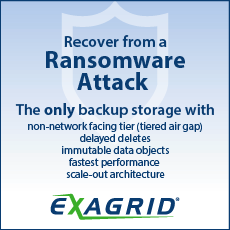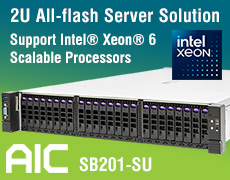Exclusive Interview with Hao Zhong, CEO and Co-Founder, ScaleFlux
Among active players in computational storage
By Philippe Nicolas | July 7, 2023 at 2:02 pm Hao Zhong, is CEO of ScaleFlux, based in San Jose, CA, a company he co-founded in 2014. Before he was at SanDisk for less than 3 years, Broadcom with LSI/Sandforce and LSI/Agere acquisitions and PhD researchers at Rensselaer Polytechnic Institute in New-York, following his PhD in Electrical Engineering.
Hao Zhong, is CEO of ScaleFlux, based in San Jose, CA, a company he co-founded in 2014. Before he was at SanDisk for less than 3 years, Broadcom with LSI/Sandforce and LSI/Agere acquisitions and PhD researchers at Rensselaer Polytechnic Institute in New-York, following his PhD in Electrical Engineering.
StorageNewsletter: You founded ScaleFlux in 2014 and raised close to $60 million. Could you share with us some figures and information regarding the company?
Hao Zhong: So, we currently have about 250 employees WW. We have all offices, and a company was founded in Silicon Valley. We now have an R&D center in China and opened an R&D center in Bangalore, India. In terms of sales, we have more; we have a sales office in Europe and covering some of Southeast Asia. So Indian on top of, you know, traditional U.S., China, Europe market. We have raised over $200M in funding so far.
What is your background?
I came to us 20 years ago for my Ph.D. study. Since then, I have been working on data storage technology. The first product I worked on was a chip for hard disk drives, and back in 2008, we helped the industry keep increasing the density and capacity of hard disks; as we moved to new technology, we had to develop the early SDD technology for the market. When the market shifted from SATA SSDs to PCIe SSDs, I learned a lot by working through all the technology, innovation, and transitions in the market. Now on my journey through storage technology, I find myself at the front of the next big wave of innovation in the industry. That’s where we got inspired to begin ScaleFlux and build the best computational storage product for the market.
What pains did you discover and wish to address to launch the company?
We find that the data is growing faster than ever in today’s world. Modern Enterprise data center professionals seek a more efficient and sustainable way to scale their data infrastructure. That’s the core of the problem that drives the innovation behind computational storage; we need to help them build more sustainable infrastructure to keep up with the data growth and processing capability.
So, what is the mission of ScaleFlux?
Our core mission is very simple. We want to build great products to help solve data growth challenges in the data center. We follow the fundamental principle that great products must be simple and effective.
Let me elaborate; we help our customers do more with less. In the case of our latest product, the CSD 3000, we have figured out how to consume less physical storage media, helping the customer to store more data and process more data in the same footprint with reduced cost. This way, we help data center customers scale their infrastructure more efficiently.
Let’s speak about your product line. Could you share some details about it?
Our product line is a series of NVMe SSDs built with onboard storage processing engines (custom SoC ASICS) to enable computational storage technology with no headache. These SSDs support a variety of form factors and PCIe Gen3 and Gen4. The result is a drive that can add multiples of increased performance, capacity, and endurance while plugging into a server like any other ordinary NVMe SSD on the market.
What are your unique differentiators? In other words, why do users prefer ScaleFlux products versus other solutions? We saw in the market some failure around C.S.; is it a sustainable model?
We built a product that is simple and easy to deploy, a drive using standard NVMe drivers that enterprise customers are already familiar with and is compatible with most of the servers in the market. To build a PCIe gen-4 product that could run on standard drivers, we had to scrap the FPGA that the rest of the industry uses and develop our own SoC ASIC. The engineering behind this project is substantial, but it has given us an edge to deliver greater performance, reduced power, and better economics – all while reducing the overall complexity of the technology.
Our first killer feature is hardware-based transparent compression. Transparent compression occurs without communication to the host CPU or application, offloading the work from the CPU to the drive. This approach not only saves the capacity, which means better cost with saving more data, but it also turns compression into a performance accelerator by reducing the reads and writes required, improving the efficiency and latency for the applications running on top of it.
How do you view the competition?
Our competition is the enterprise SSD vendors who sell commodity NVMe drives to customers that offer marginal differentiation and sell primarily on cost. We offer an option for customers who want a better SSD that gives them significantly more of everything they need to address the problems of scaling performance, becoming more sustainable, and reducing storage costs.
What about your cloud strategy? Any interest from Hyperscalers?
Much of the innovation pushing technology forward comes from Hyperscalers. We increasingly see products built around custom chips deployed in cloud data centers. For example, AWS is building its SSDs based on custom silicon and many others. To accomplish this, they work with partners to create this technology, and we compete aggressively to be one of them. This trend creates exciting opportunities for start-ups like us.
Who are your customers? We found Tongdun Technology and GMO GlobalSign Holdings on your web site.
We have focused on large enterprise, webscale, and hyperscale customers for our direct sales efforts. While we have not been public with the names of our customers, we can share that we have deployments with a variety of customers from cloud service providers , online gaming, and financial services to adtech and high-tech industry leaders.
How do you sell your products? Your products are a fit for OEMs. Any partners you can mention?
We help partners and OEMs build solutions that need high capacity, high performance, and low latency while maintaining a small footprint. We find the most successful partners with customers using workloads like relational databases or NoSQL. We work closely with OEMs like Dell, HPE, and Inspur because our end-users often prefer buying fully integrated systems. We can help them accelerate performance and reduce latency while improving the TCO. We also work with system integrators and value-added resellers to reach a broader scope of end-users.
What is the associated pricing model? Any MSRP price you can mention?
We need a win-win situation with our customers and partners, which means we create more value for our customers. It’s important that everybody feels the benefits of the relationship. So, with that in mind, we strive to create a competitive solution that excites the whole ecosystem.
What are the next steps for ScaleFlux in terms of company and products? What can we expect for the rest of 2023? Do you need to raise a new VC round?
In this space, start-ups face some challenges. So that’s why when we talk about funding, we are fortunate to get strategic investment from our ecosystem partners like SK, Kioxia, Micron, and AMD. When engaged with that ecosystem, you must be more strategic, have a vision and a longer timeline, and people are patient. It gives us a chance to truly collaborate and create great technology in the interest of longer-term success. With some venture capital backup, we can sustain more investment, develop more silicon technology, and help our enterprise or OEM partners create better solutions for their customers.
Right. So, with this, we have been raising multiple rounds of funding.













 Subscribe to our free daily newsletter
Subscribe to our free daily newsletter

